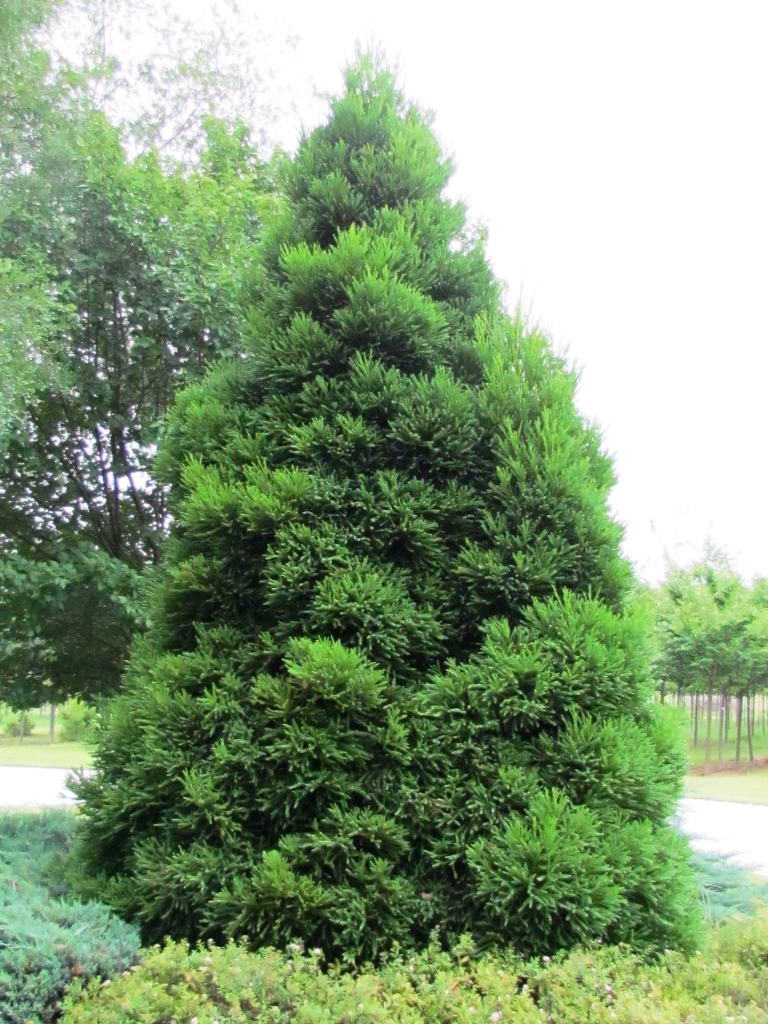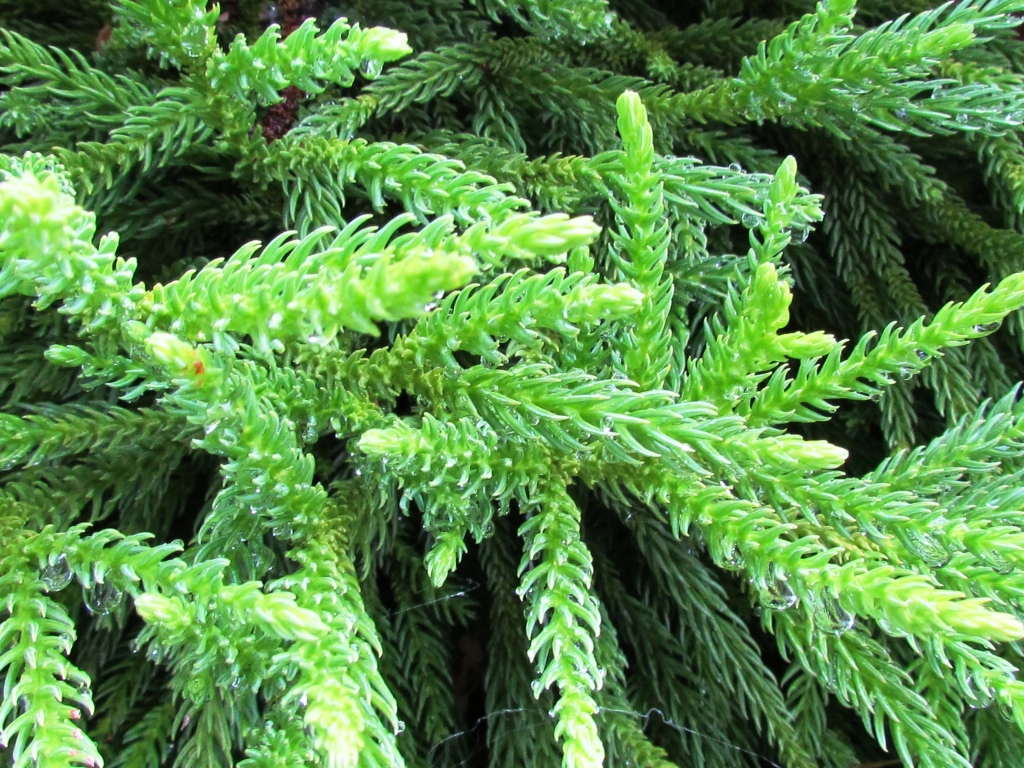Cryptomeria japonica 'Honey Moon' is an excellent new selection of Japanese cedar. The following description is provided by Tom Cox, former president of the American Conifer Society -
I saw this specimen in the owners front yard and it stopped me in my tracks. Aside from 'Dense Jade', I had never seen one this full for that size. I rank it as the best of the intermediate-sized Cryptomeria. It has no unsightly foliage and remains green in winter. Its growth habit is distinctly upright and dense. He propagated one for me and after years of evaluation here at the arboretum, I gave it the name 'Honey Moon;' it is one sweet plant. Growth tends to be slow which means it won't quickly outgrow its space. It is best grown as a specimen plant.Typical rate of growth in most areas is 4 to 6 inches (10 - 15 cm) a years, resulting in a dense conical tree, 5 feet tall and 4 feet wide (1.5 x 1.2 m) after 10 years in the landscape.
Dwayne Moon is credited with the origin of 'Honey Moon.' It was propagated from a branch sport on a specimen of 'Lobbii' at his namesake tree farm in Loganville, Georgia. As stated previously, Tom Cox is the official nominant. In the near future, he intends to register this conifer with the Royal Horticultural Society of London via Dawes Arboretum.

